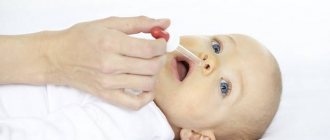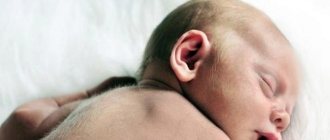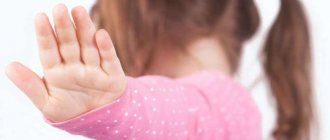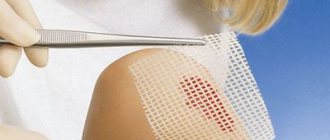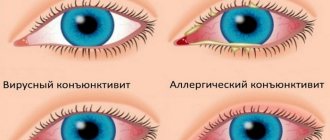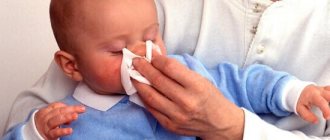Nasal congestion in a child is a fairly common and widespread phenomenon. If the pathological process continues for a long time, then this negatively affects the general condition. Babies with congestion refuse to eat because they cannot breathe during feeding, which leads to weight loss and weakness of the baby. Older children have trouble sleeping or breathe through their mouths at night, which allows pathogens access to the tonsils. This can ultimately lead to more serious health complications. Therefore, it’s worth figuring out if a child’s nose is clogged, what parents should do and how to alleviate the baby’s condition.
Causes
If the child’s nose does not breathe and there is no snot, then this indicates congestion, which prevents the baby from breathing normally. To eliminate it, it is important to find out the main reason that could provoke the pathological process. Nasal congestion is not a disease, but only an accompanying symptom indicating the initial development of pathology. If the provoking factor is not identified, it will appear regularly, causing serious discomfort to the child.
Common reasons:
- cold;
- infection;
- hypothermia;
- allergy;
- teething in combination with a bacterial infection;
- unfavorable environmental conditions;
- artificial feeding.
In addition to the reasons listed, other factors can provoke congestion when the child’s nose does not breathe and there is no snot for a long time:
- Congenital curvature of the nasal septum.
- A bruise that caused damage to the nasal septum.
- Foreign body trapped in the sinus.
- Adenoids or polyps.
- Congenital anomalies of the respiratory system.
If a child’s nose is clogged at night, but breathing is normal during the day, then the reason for this is the dry air in the room where he sleeps. Therefore, parents should pay attention to any manifestation of congestion, which can ultimately help the doctor establish the correct diagnosis and find the provoking factor.
The dangers of difficulty breathing at night
Breathing problems at night are very dangerous. The child does not receive enough oxygen, which in turn can lead to the development of various diseases.
Consequences of nasal congestion at night in a child:
- The most serious disorder is developmental delay due to oxygen starvation;
- Overexcitation of the central nervous system;
- Drowsiness, weakness;
- Apathy;
- Loss of appetite;
- Inflammation of the ear (possible development of otitis media and hearing impairment);
- Development of bronchitis or asthma;
- Formation of malocclusion;
- The appearance of problems with speech;
- Decreased visual acuity;
- Increase in temperature;
- Inflammatory process.
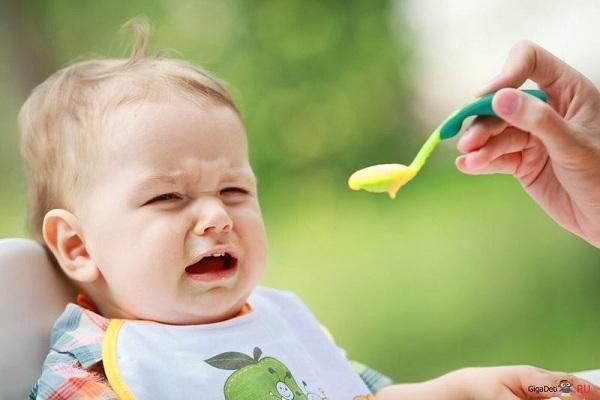
Nasal congestion is especially dangerous in a newborn baby. Infants cannot explain what exactly is bothering them, but at the same time the fragile body experiences severe stress.
Therefore, at the first signs of nasal congestion, you should urgently take your baby to the pediatrician.
If a mother dreams that the baby has a stuffy nose, then she can look at the dream book to interpret the dream.
Nocturnal nasal congestion in newborns
Nasal congestion in newborns is a fairly common occurrence. In the first 2-3 months after birth, the nasal mucosa has not yet fully formed. And the child may experience breathing problems. In this case, there should be no runny nose.
Also, a baby may have trouble breathing due to the dry air in the room. What to do in this case? Regularly you need to carry out wet cleaning, ventilate the room and spray water from a spray bottle to increase the level of air humidity.
What to do if your nose is stuffy
What to do if your baby’s nose gets blocked in a dream? First of all, you need to contact your pediatrician. Under no circumstances should you self-medicate, or try to determine the cause of breathing problems yourself, especially in a newborn. The child's body is very weak and any wrong action can negatively affect the baby's health.
The doctor will examine the child’s nose and may prescribe various tests to clarify the diagnosis. And based on them, he will select the appropriate treatment.
If the cause is a runny nose, then it must be treated promptly. If you delay going to the doctor and try to cure a runny nose on your own, it can turn into chronic sinusitis or sinusitis. These are very serious diseases. And then it will be much more difficult to cure a runny nose.

Drug treatment
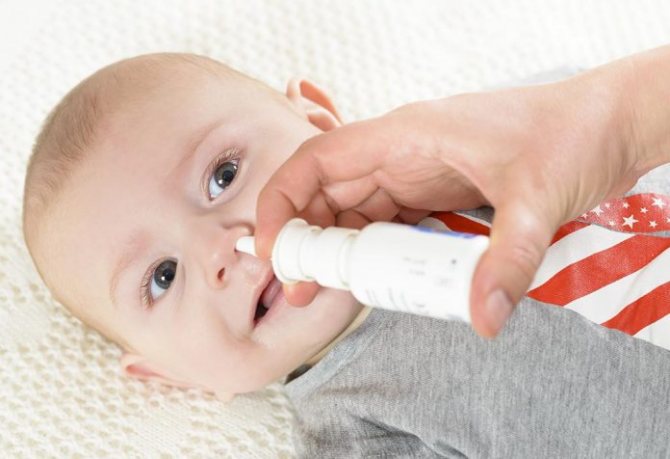
This treatment method involves the use of drugs to eliminate the underlying cause of congestion. If the pathological process is caused by an allergy, the doctor prescribes additional antihistamines to reduce inflammation of the mucous membrane.
Most often, vasoconstrictors are used to relieve congestion, helping to narrow blood vessels. In addition, they eliminate swelling of the mucous membrane and improve breathing. The positive effect is noticeable within a few minutes after spraying the product. The advantage of nasal sprays and drops is that they act precisely in the areas of spraying. Therefore, the active component is not able to be absorbed into the blood in larger quantities, which means it does not have a negative effect on the baby’s body. This type of medication should not be used for more than 5 days, as this can lead to the opposite effect of therapy.
If a child has a clogged nose, how to treat it? This can only be determined by a doctor based on an examination and interview with parents. Self-medication can lead to complications.
The most common vasoconstrictor for children is Dlyanos. The release form of the drug can be in the form of a spray (from 6 years) or drops (up to 6 years), so you can choose the most suitable option.
Causes of congestion
To establish the causes of nasal congestion, it is necessary to understand what preceded this condition. The following factors matter:
- contacts with an infected person;
- exposure to allergens;
- hypothermia;
- prolonged inhalation of dry air;
- features of the diet.
To assess the general condition, you should measure the child’s temperature, analyze activity and appetite.
ARVI
This condition is considered the most common cause of problems. In the first 2-3 days of the illness, the baby develops nasal congestion. The pathology has not yet fully manifested itself, but inflammation of the mucous membranes has already occurred.
Allergic rhinitis
This condition appears at certain times of the year - most often in the spring. However, there are other allergens that can be active throughout the year. These include wool, food, and house dust. To determine the causes of the disorder, the child should be shown to an allergist.
Overgrowth of adenoids
Under the influence of various factors, these elements may increase in a child. The mucus that is released begins to flow down the back wall of the nasopharynx. At the same time, the nose gets blocked at night, the child is forced to sleep with his mouth open. He may wheeze. If such a clinical picture appears, you should definitely consult a doctor.
Polyps
When these benign formations appear in the baby’s nose, there is chronic congestion. It can be temporarily eliminated with drops. However, such drugs cannot completely solve the problem. In addition to congestion, there is general weakness, impaired sense of smell, and frequent ENT pathologies.
Often, polyps provoke compression of blood vessels, which leads to disruption of the blood supply to tissues. As a result, swelling occurs. When the auditory tubes are damaged, hearing and speech disorders occur. Such signs are very dangerous for young children. Often the formation of polyps provokes a change in bite.
Sinusitis
With this disorder, mucus does not flow from the nasal sinuses. In this case, a headache is observed. Nasal congestion does not go away for quite a long time, which only aggravates the condition of the little patient. In such a situation, you should immediately consult a doctor. To cope with sinusitis, it is often necessary to use antibiotics.
Deviated nasal septum
This disorder may be associated with physiological processes. It has different course options. However, it is very difficult to immediately detect such changes.
An article on the topic - signs and methods of treating a deviated nasal septum.
Hormonal disorders
Changes in hormone balance usually occur during adolescence. This condition can also cause congestion, in which there is no runny nose.
Impact of external factors
In large cities there is a large emission of gases and dust. As a result, children experience nasal congestion. As a result, it is very difficult to breathe. This can lead to dangerous pathologies.
Foreign object
In some cases, foreign objects enter the nostrils. These can be small buttons, beads, pieces of food. Sometimes foreign objects enter the respiratory system through vomiting. As a result, sneezing and watery eyes occur. After some time, these symptoms disappear and nasal congestion remains.
An article on the topic - how to restore the nasal mucosa - how to moisturize it.
“For the nose” for children: instructions for use
Drops and spray of the drug are intended for intranasal administration:
- Spray 0.1% (from 6 years). If a child has a stuffy nose and no snot, it is necessary to inject the product up to 4 times a day. To perform the procedure correctly, it is recommended to hold the bottle of medicine vertically so that its nozzle is directed upward. Carefully insert the spray nozzle into the nostril and press sharply, then remove the nozzle without releasing it. This will allow the solution to be evenly distributed on the nasal mucosa. Repeat the procedure with the other sinus.
- Drops 0.05% (up to 6 years). The drug is administered into each nasal cavity, 1-2 drops using a pipette. Regularity of use - no more than 3 times a day. Use to relieve congestion for no more than 5 days.
Vasoconstrictor drops should be considered as an addition to the main treatment. They help alleviate the child's condition and improve air flow through the nose. But this group of drugs is not able to cope with the underlying cause.
If a child’s nose is clogged and drops do not help, you can help the baby with home rinses.
Algorithm of actions in all situations
If a child has a stuffy nose due to a medical condition, the underlying cause should be addressed as quickly as possible.
Infectious rhinitis
The following therapeutic regimen is used to treat snot. Washing.
For an infant you should prepare in advance:
- rubber bulb for suctioning snot;
- syringe without needle;
- cotton turundas;
- a clean diaper;
- isotonic solution;
- boiled vegetable oil.
The child is placed on his side, having previously lubricated the nasal passages with oil to soften the crusts, then they are carefully removed with a cotton swab. Then, using a syringe without a needle, an isotonic solution is poured into the nasal passages one by one - you need to make sure that the baby does not begin to choke. The remaining water that has not poured out, together with the discharge, is sucked off with a rubber bulb.
With older children, the procedure is carried out in a sitting position; children from 4-5 years old are already able to rinse their nose themselves, sucking water from their palm over the bathtub.
In addition to the isotonic solution, you can use infusions of medicinal herbs that have an antiseptic or anti-inflammatory effect.
- For a runny nose, the doctor prescribes vasoconstrictor drops for 4-5 days - they will help the child sleep peacefully. You should not purchase the drug yourself without consulting a doctor - pharmacies have a huge selection of such drugs, but each age needs “its own” medicine;
- Anti-inflammatory drops are used - again on the recommendation of the pediatrician.
To eliminate the concomitant disease, their own remedies are also used.
Allergic rhinitis
Washing is carried out in the same way as in the case of a runny nose of infectious etiology.
- Antihistamines of general and local action – tablets and drops – are introduced into therapy.
- It is imperative to identify the source of the allergen and exclude contact with it, if possible.
- If hay fever is detected, it is necessary to carry out treatment so that the runny nose does not recur during the flowering period.
Teeth!
When teething, you need to make sure that secondary infection does not occur - you can even create “quarantine conditions” for the baby for several days.
To alleviate the condition, the nose must be rinsed, and during sleep it makes sense to use vasoconstrictor drops.
Anomalies of the nose structure
Congenital and acquired anomalies in the structure of the respiratory organ cannot be eliminated at home.
- The problem is solved after consultation with a doctor - surgical intervention may be recommended.
- The same measures are taken when polyps or adenoids grow.
- Currently, children are trying to undergo gentle operations using endoscopy. The rehabilitation period after such surgery is minimal.
In some cases, the growth of adenoids can be stopped with medication.
Sinus rinsing
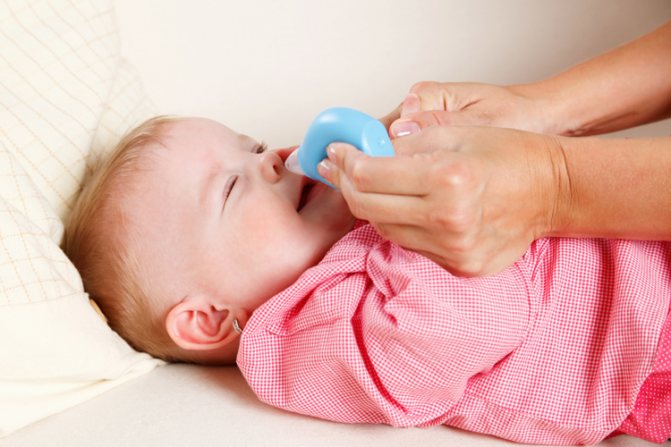
This therapeutic method should be used if the child’s nose is constantly clogged, and not just at night. The procedure helps improve air permeability and reduces swelling of the mucous membrane.
Rinsing the nasal sinuses helps remove dust and allergens, so pediatricians recommend using this procedure for preventive purposes, which reduces the likelihood of developing diseases.
For the procedure, you should use special solutions that can be purchased at a pharmacy or prepared at home. The components they contain contribute to uniform hydration of the nasal cavity and prevent the appearance of microcracks through which infection can enter the child’s body. But before using this method of removing congestion, you should familiarize yourself with the rules for its implementation, as well as study the existing restrictions.
Traditional Treatments
To choose the right therapy, you need to analyze other symptoms of the pathology.
The baby may experience itching, watery eyes, and a burning sensation. In this case, congestion may be a manifestation of an untreated respiratory disorder. If breathing problems occur due to a cold, special solutions and vasoconstrictors are used to eliminate the discomfort. These include galazolin, tizin, etc. Such products can only be used as prescribed by a doctor.
Experts do not recommend using such drugs for more than 3 days . Longer use may lead to addiction. As a consequence, there is a threat of atrophic changes in the structure of the mucous membrane.
At home, it is permissible to use the following recommendations from specialists:
- Hot foot baths. Thanks to this procedure, it will be possible to achieve a temporary result and make it easier for the baby to breathe by eliminating swelling.
- Low concentration saline solution. This product is used for washing several times a day. Sea salt is most suitable for this purpose.
- Massage. An excellent remedy for nasal congestion is massaging the pad of the hand. It is present on both hands in the thumb area.
It is important to ensure that the child’s nasal congestion does not become chronic. If any signs appear, you should immediately contact an otolaryngologist.
When adenoids grow, the use of medications and special drops does not give the desired results. In this situation, the specialist prescribes physiotherapy. In difficult cases, surgery is used. If polyps form in the nasal cavity, surgery is also indicated.
We recommend what to do if one nostril is blocked.
Wash products
You can use different types of products to rinse your child's nose. Each of them is used depending on the complexity of the problem.
Types of solutions:
- Boiled water. This component is used when a child’s breathing through the nose is impaired due to dried crusts. Therefore, there is no need to use special saline solutions.
- Sterile saline solution. The product is used for colds, allergies, and sinusitis. Saline solution can be purchased at a pharmacy. Essentially, it is a saline solution based on sodium chloride. The product is available in ordinary glass containers, so for rinsing you need to additionally purchase a pipette.
- Sea water solutions. The advantage of the product is that, in addition to salt, it contains minerals that improve the hydration of the nasal mucosa and the function of small capillary vessels in it. In addition, this solution relieves swelling, inflammation and has antiseptic properties.
- Special sprays based on sea salt. This group of drugs is available in 2 types: isotonic and hypertonic. In the first case, the salt concentration in the solution is 0.9%, which is as close as possible to blood plasma. Therefore, the use of isotonic sprays is recommended both for the treatment of congestion and as a preventive measure. They help restore and maintain mucosal function. In the second case, the salt concentration reaches 2.1%. Therefore, it is recommended to use hypertonic sprays or drops purely to relieve congestion when the child’s nose is clogged and cannot be blown out. They effectively relieve swelling, thin mucus and promote its removal, and also have bactericidal properties.
In addition to the listed remedies, you can use decoctions of medicinal herbs (chamomile, calendula), Furacilin, soda, iodine, Miramistin for washing. But the use of these components should be coordinated with a pediatrician, since only a doctor will be able to determine the degree of risk for the child.
Nasal rinsing for infants
Before you begin the procedure, you should figure out how to rinse your child’s nose at home, depending on his age.
To eliminate congestion in a baby, you need to be patient. Therefore, pediatricians advise carrying out the therapeutic procedure when the child is in a good mood, this will help reduce discomfort.
Sequencing:
- Lay the baby on his back.
- Prepare cotton buds by first moistening them in boiled water.
- Use them to clean (as far as possible) the nasal cavities.
- Place 1 drop of sea salt solution into each nostril.
- Wait a few minutes until the liquid dissolves the crusts in the depths.
- Using a special aspirator, remove the soaked contents.
You can repeat the procedure no more than 3-4 times a day throughout the week. For infants, you can use both drops and sprays based on sea salt. Many of them are sold complete with a soft nozzle, which prevents deep insertion.
Treatment of nasal congestion in children
If the cause of a runny nose and worsening nasal breathing is a cold or a virus, you should not immediately buy vasoconstrictor drops for nasal congestion for children. You can resort to simpler and more effective methods.
Salt rinses
To begin, sanitize the nasal passages with saline solutions: aquamaris or quix, physiomer, salin, or ordinary table or sea salt, diluted according to the advice of an ENT specialist (in most cases, dilute 1/4 tsp of salt in a quarter cup of warm boiled water). For yellow snot, the concentration of the solution prepared at home may be higher, so be sure to ask your doctor how to properly prepare the product before the procedure.
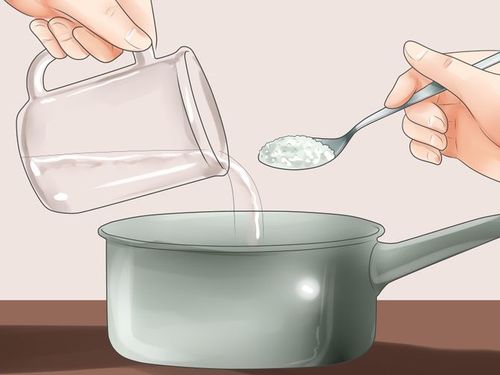
Washing is carried out about 4 times a day, sometimes more often. For procedures, a disposable syringe or pipette is used. Depending on the age of the child, the required amount of solution is poured into each nasal passage. For a baby, 2 drops in each nostril is enough, and for a 7-year-old child, you can safely pour in 1 ml of salt solution.
For infants and small children, modern aspirators are used to help clear the nose and improve breathing.
Salt rinses improve nasal breathing and kill pathogenic microflora. They are carried out throughout the runny nose.
If these procedures are ineffective, instillation of vasoconstrictor drops or the use of a spray may be required. for nasal congestion, which must be intended only for children (produced in children's dosage). We'll talk about them a little later.
Iodine with sea salt
Nasal swelling is relieved with the following composition:
- iodine – 2 drops;
- sea salt – 0.5 tsp;
- warm boiled water – 200ml.
Instill the resulting mixture throughout the day if there is severe congestion (2-3 drops in each nostril).
An article on the topic - how to quickly cure a runny nose in children at home.
Therapeutic inhalations
Warming the nose over medicinal steam helps improve breathing. Add essential oils (2-3 drops), for example, fir oil, cedar oil, or 1/2 tsp to a liter saucepan with hot water. soda You should breathe for about 5 minutes, covered with a towel. Parents should show their child by example how to perform the procedure correctly.
Children under two years old
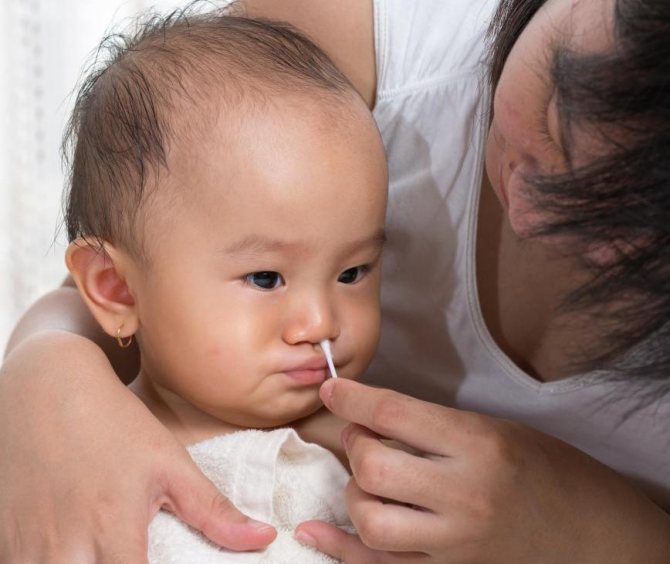
The procedure for rinsing the nose is much simpler if the child already confidently holds his head and stands on his feet. At this age, the baby already realizes that this procedure brings relief and improves breathing through the nose.
Washing is carried out as follows:
- Place the child in front of the basin so that he is in a purely vertical position and tilts his head slightly forward.
- Using cotton swabs dipped in boiled water, clean both nasal passages so that all the crusts can soften.
- Draw the prepared saline solution into a soft bulb or syringe without a needle.
- Place the tip into the nostril and gradually drain the liquid without pressure.
- The baby's mouth must be open during the procedure.
- Repeat the procedure with the other nostril, without allowing the child to raise his head.
- At the end of the rinsing, ask the child to blow his nose, alternately pinching one or the other nasal passage.
When the baby gets used to the therapeutic procedure, the stream of solution can be made a little stronger. Don't forget to reward your child with a new toy or tasty treat. This will smooth out the baby’s unpleasant associations.
Nasal rinsing for schoolchildren
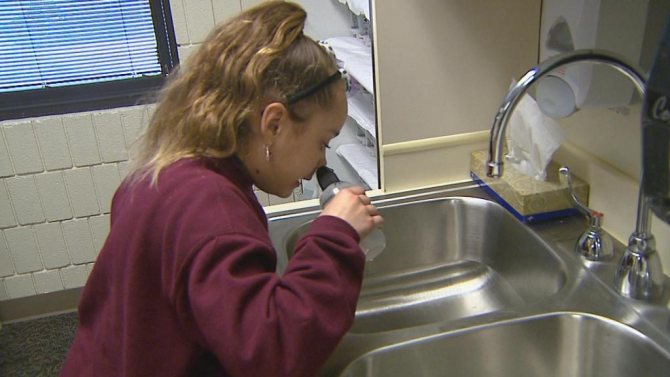
Carrying out nasal rinsing for school-age children is not particularly difficult. They can already explain the importance of this procedure and the need for it.
To clean the nasal cavity, it is recommended to use special teapots with a long spout. Saline solution is poured into this container. The child should stand in front of the washbasin, tilting his head slightly to one side and forward. The tip of the teapot is inserted into the upper nasal cavity and the liquid is gradually poured out. In this way, the nose is completely washed, since the solution will pour out from the other nostril.
If the child’s nose is stuffy and there is no snot, it is necessary to repeat the procedure at least 3-4 times a day, alternating between the nasal sinuses.
Nasal congestion without snot in a child. What to do when a child has a stuffy nose without a runny nose
Perhaps you have encountered a situation where a child’s nose is stuffy, but there is no snot. Then the question arose of what provokes this congestion, how to act, how to help. In this article we will look at the most common causes leading to this condition, talk about possible consequences, treatment methods, including traditional medicine.
Possible reasons
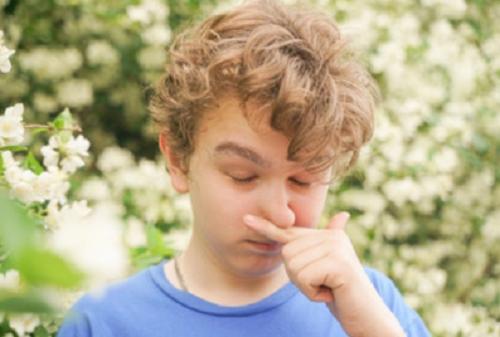
Nasal congestion without snot may be a manifestation of an allergy
A stuffy nose, unaccompanied by snot, can occur both in a child of the first year of life and in 2 years and older. It is important to understand that this phenomenon is necessarily preceded by some factors, something that provokes dry congestion.
- The presence of a cold or viral infection in the body. This phenomenon is often a sign of a respiratory disease. Severe congestion may be an immune response to the penetration of a virus that has entered the body through the nasopharynx. If this problem is noted during ARVI, then, as a rule, it is possible to get rid of nasal congestion within a week.
- The presence of a bacterial infection. Often occurs against the background, as a result of improper treatment of a runny nose, which leads to inflammation of the nasal sinuses and their consequences in the form. If this is your case, then congestion may be replaced by the release of purulent mucus.
- Presence of adenoids. This disease is often diagnosed in preschool children, especially at 3 years old. Without timely treatment, this condition can lead to surgical removal of the adenoids. It is worth noting that the baby’s nose is more stuffy at night than during the daytime.
- Allergic reaction. Often, it is contact with an allergen that leads to a child’s nasal congestion without snot discharge. This condition may be accompanied by frequent bouts of sneezing, as well as itching in the sinuses. This type of allergy often occurs.
- Exposure to cigarette smoke. If the baby is a passive smoker, he may develop inflammatory processes in the nasopharynx, which, in turn, will lead to the formation of bronchial asthma.
- Injury or pathological changes in the anatomical structure of the nose. The phenomenon under consideration, for example, can occur when the septum is deformed, leading to obstruction of the nasal passages. It may also result from damage to the nasal bones at birth or during intrauterine development.
- The presence of low humidity in the room where the baby is located, dry air.
- Period of teething. During this period, the baby's nasal mucosa may swell, which will lead to nasal congestion.
- Presence in the nasal passages.
Inhalations
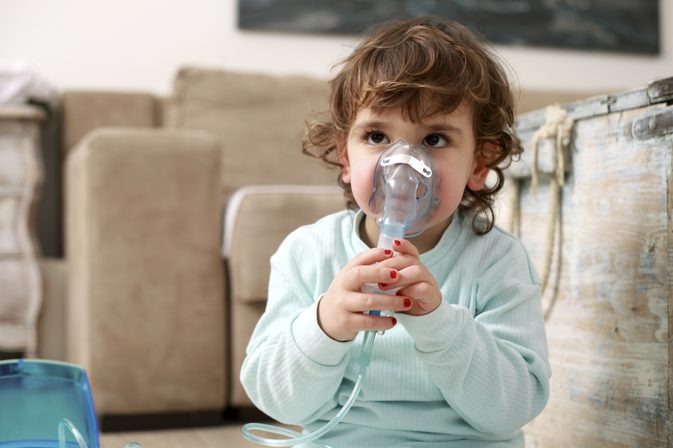
If a child has a stuffy nose, what to do and how to help the baby if it is not possible to rinse? In this case, inhalations can be used. This method of therapy is based on warming the upper respiratory tract. It can only be used in consultation with a doctor, when the main cause of long-term congestion has been accurately established.
To carry out inhalation, you need to purchase a special device at the pharmacy - a nebulizer. This will greatly simplify the procedure. The temperature of the saline solution should be 37-38 degrees. The child should lean over the device and breathe into it for about 10 minutes.
It is recommended to repeat inhalations every 3-4 hours.
Stuffiness without runny nose
If a child has a constantly stuffy nose and no mucus discharge is observed, this picture can be caused by the following pathologies:
- Adenoids.
With this disease, there is a pathological increase in lymphoid tissue in the nasal cavity, which significantly complicates the breathing process and causes night snoring.
Children under the age of 6 years are susceptible to the disease; it is in them that the immune system has not yet become stronger and reacts to the constant struggle of the mucous membrane with enemy agents by pathological proliferation of lymphoid tissue.
Constant congestion does not allow the baby to breathe, he sleeps poorly at night, snores, and often wakes up. Also, breathing problems can lead to deterioration of attention and memory due to lack of oxygen.
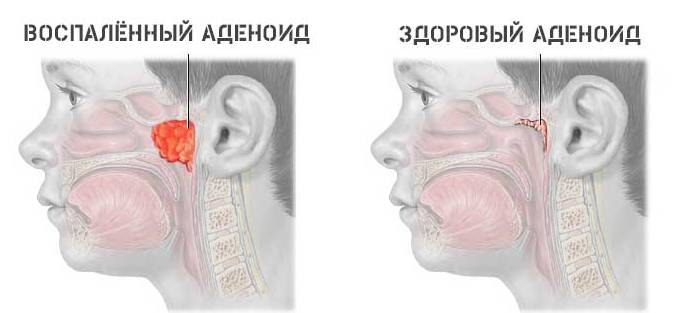
- Polypous growths.
The disease is an excessive growth of connective epithelial tissue in the nasal cavity. It can develop as a result of frequent infectious processes in the nasopharynx, with decreased immunity and hypothermia.
Polyps go through three stages - at first they are small and cover only the upper part of the nasal septum; as they grow, they increase in size, which leads to the third stage, when the entire nasal passage is blocked.
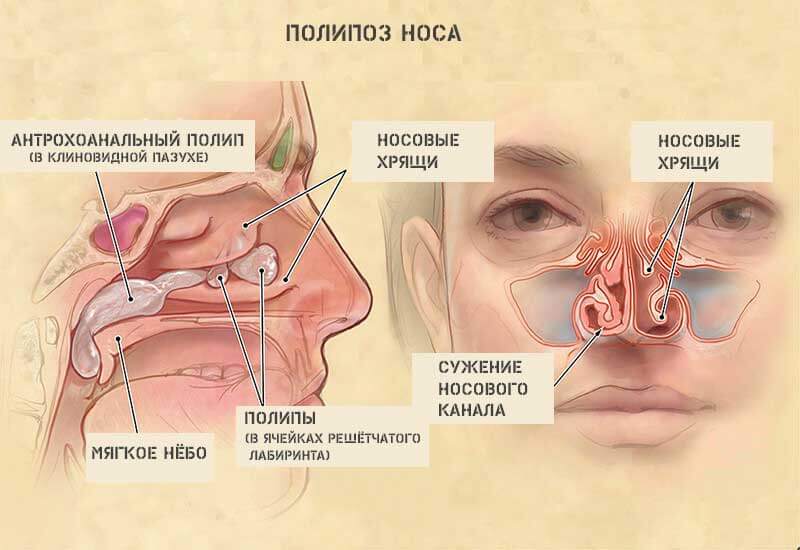
- Deviation of the bony septum of the nose.
May be congenital or acquired as a result of injury. Due to the inability of one nostril to pass a full air flow, the second begins to work in increased mode, as a result of which the mucous tissue swells and grows, causing nasal congestion.
What exactly causes the congestion will be determined by the doctor during the examination. Radiography, endoscopic examination, magnetic resonance and computed tomography will help confirm or refute the presence of polyps, adenoids and curvature of the bony septum.
Preventive measures
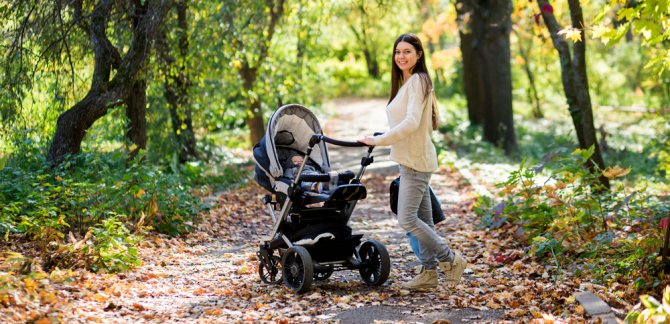
If a child has a clogged nose, we have already figured out what to do in this situation. It remains to familiarize yourself with some prevention rules that will help prevent the recurrence of congestion:
- Regularly ventilate the premises and humidify the air in the baby’s room. This is especially true in winter when heating devices are on.
- If an allergic cause of congestion is identified, use antihistamines in advance during especially dangerous periods of the year.
- Treat ENT diseases in a timely manner so that the pathology does not develop into a chronic form.
- Take regular walks in the fresh air.
- Clothes should be selected according to the weather so that the child does not become hypothermic or overheated.
- The baby should drink enough water so that the nasal mucosa does not dry out.
The child's nose is clogged. What to do? The main thing for parents in this situation is not to panic and not to experiment with untested methods, since the baby cannot always tell about his problem. Only careful attention to the child’s health and the necessary care will help the baby recover quickly. It is also worth remembering that any medications and therapeutic procedures should be used on the recommendation of a doctor.

